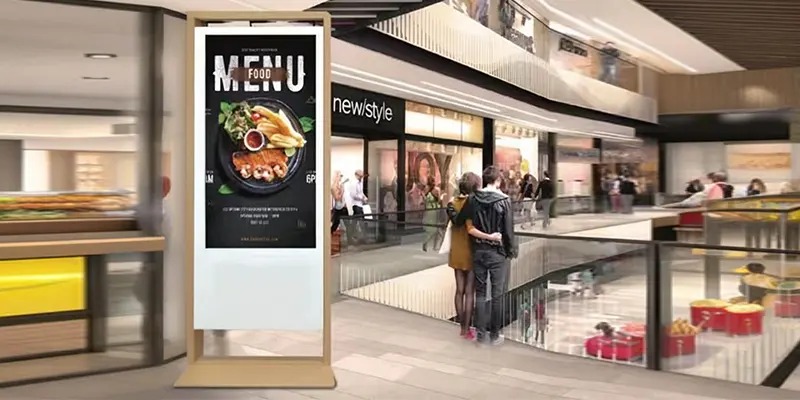What is the purpose of shopping mall advertising screen?
Walk into any modern shopping mall, and you’ll be greeted by a vibrant mix of sights and sounds—most notably, the bright, dynamic digital screens scattered across every corner. From massive LED walls near entrances to sleek interactive displays by escalators and food courts, these screens do far more than decorate the space. They serve as strategic marketing tools that grab attention, inform shoppers, and influence purchasing decisions. In today’s fast-paced retail world, shopping mall advertising screens have become an essential bridge between brands and consumers, transforming ordinary visits into engaging, interactive experiences. But what exactly is their true purpose, and why are they becoming such a vital part of mall design and marketing strategy?

What is Shopping Mall Advertising Screen?
A shopping mall advertising screen is a digital display system—typically LED or LCD—that showcases visual content such as brand advertisements, store promotions, event announcements, or interactive guides. Unlike traditional posters or static billboards, these screens can present dynamic, high-definition visuals that instantly grab attention. They are strategically installed in high-traffic areas like entrances, hallways, escalators, and food courts to maximize visibility and engagement. The core idea behind them is simple yet powerful: deliver the right message to the right audience at the right time, using motion, color, and interactivity to influence shoppers’ decisions and enhance their overall mall experience.
Types of Advertising Screens Used in Malls
Video walls – Large-format displays used for high-visibility branding.
Interactive kiosks – Touch-enabled screens that provide product info or wayfinding.
Digital posters – Slim, vertical screens used near entrances and corridors.
Ceiling or escalator screens – Eye-level displays for maximum visibility.
What are the Uses of Advertising Screens in Modern Retail?
Digital screens in modern retail environments serve a much deeper role than simply displaying advertisements. They act as communication bridges, allowing brands to connect with consumers instantly and dynamically. Through vibrant visuals, motion graphics, and real-time content updates, these screens create a sense of excitement and modernity that traditional signage can’t match. Beyond promoting products, they enhance the overall shopping atmosphere—making malls feel more engaging, tech-driven, and customer-focused. By transforming ordinary walkways into interactive storytelling spaces, advertising screens help shape a memorable shopping experience that keeps visitors coming back.
Main Purposes of Shopping Mall Advertising Screens
1. Brand Awareness and Visibility
The most obvious purpose is to make brands stand out. When shoppers walk by a glowing display, they instantly recognize a brand’s logo, campaign, or new product. Repetition builds familiarity—and familiarity drives trust.
2. Promotion of Products and Services
Retailers use mall screens to promote limited-time offers, discounts, and new arrivals. It’s like having a salesperson that never sleeps, constantly updating passersby with fresh deals.
3. Guiding Shoppers and Improving Navigation
Screens don’t just advertise—they inform. Many malls use digital wayfinding screens to guide customers toward stores, restrooms, or event areas. This improves the overall shopping flow and customer satisfaction.
4. Creating Immersive Shopping Experiences
Imagine walking past a screen that reacts to your movement or lets you virtually try on clothes. These immersive experiences make shopping memorable and fun, encouraging customers to spend more time—and money—inside the mall.
5. Boosting Sales through Targeted Ads
Modern digital screens can display ads tailored to the time of day, weather, or even the demographic of nearby shoppers. This precision marketing increases conversion rates significantly.

Advantages of Using Shopping Mall Advertising Screen
Using digital advertising screens in shopping malls offers a wide range of advantages that make them far more effective than traditional signage.
One of the biggest benefits is their ability to update content instantly, allowing retailers to adapt ads to current promotions, events, or time-sensitive campaigns without reprinting costs.
Their dynamic and high-definition visuals naturally capture attention, making messages more memorable and engaging for shoppers.
Digital screens also offer flexibility and control, enabling advertisers to schedule content for specific times, audiences, or even locations within the mall.
Over time, they prove to be cost-efficient, as they reduce waste and ongoing printing expenses.
Additionally, many modern screens include interactive features—such as touch or motion sensors—that invite customer participation, turning ads into experiences.
Altogether, these advantages make digital advertising screens a powerful, adaptable, and sustainable choice for modern retail environments.
How Shopping Mall Advertising Screen Benefit Stakeholders
1.For Retailers
Increased visibility, higher sales, and measurable ROI from targeted ads.
2.For Shoppers
Better navigation, entertainment, and real-time access to promotions.
3.For Mall Management
Increased revenue from advertising partnerships and enhanced mall appeal.
Conclusion
Shopping mall advertising screens have transformed the retail landscape. They’re not just digital billboards—they’re dynamic communication tools that blend marketing, entertainment, and innovation. From guiding shoppers to boosting sales, these screens redefine how brands connect with their audiences in physical spaces.
FAQs
1. What makes mall advertising screens effective?
Their ability to deliver dynamic, attention-grabbing, and relevant content in real time makes them powerful marketing tools.
2. How do digital screens influence consumer behavior?
By showcasing engaging visuals and timely offers, they drive impulse purchases and enhance brand recall.
3. Are mall advertising screens expensive to maintain?
Not really—modern LED technology is energy-efficient and requires minimal upkeep.
4. What kind of content works best for mall screens?
Short, colorful, and motion-based ads with clear messages perform best.
5. What is the future of mall advertising technology?
Expect smarter, more interactive, and eco-friendly digital screens powered by AI and AR.
